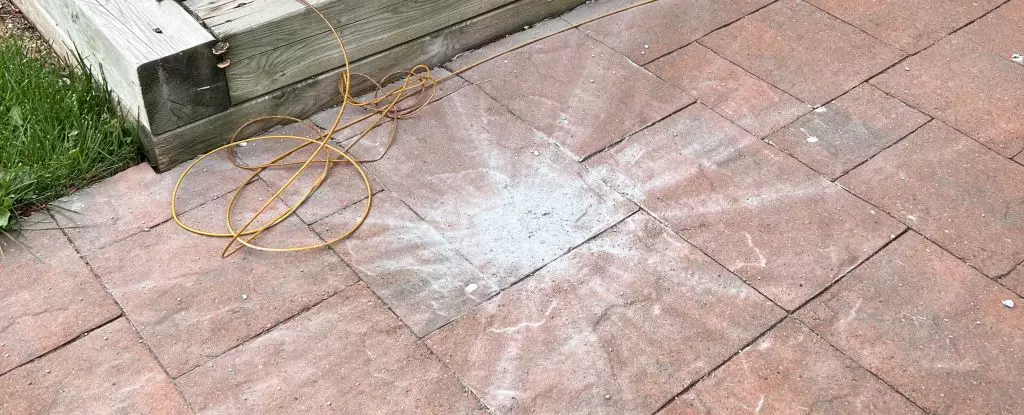The phenomenon of meteorites streaking across the sky has captivated humanity for centuries, serving as a reminder of our planet’s place within the cosmos. As we continue to document our environment with the prevalence of technology like smartphones and smart home devices, new milestones are being established. An extraordinary event occurred in July 2024 on Prince Edward Island, Canada, marking what many consider to be the world’s first documented audio and visual capture of a meteorite’s fall. In this article, we delve into the incident involving Joe Velaidum and Laura Kelly, who inadvertently recorded a striking celestial moment with their Ring doorbell camera.
What sets the Charlottetown meteorite event apart from its predecessors is the dual nature of its documentation. While there have been countless sightings of meteors, the combination of both video footage and the distinct sound of impact is unprecedented. Chris Herd, a geologist from the University of Alberta, who studied the recovered fragments, asserts the significance of this incident. He states, “No other meteorite fall has been documented like this, complete with sound,” thus highlighting the scientific and historical value of the discovery.
Joe and Laura were entirely unaware of the history being made when they ventured out to walk their dogs. Upon their return, they found strange debris littering their walkway, which initially went unnoticed until discussions with family neighbors unveiled the potential origin of the fragments. Joe’s reaction encapsulated the dramatic nature of the event, as he expressed shock at how close he had been to the meteorite moments before its descent: “If I’d have seen it, I probably would’ve been standing right there, so it probably would’ve ripped me in half.”
The likelihood of encountering a meteorite on Earth is not as far-fetched as it may seem. Every day, an estimated 48.5 tons of meteoritic material enters our atmosphere; however, a minuscule fraction of this actually reaches the surface. Most meteoroids disintegrate and vaporize during their atmospheric entry, while large enough chunks that survive typically land in oceans or remote areas, remaining undiscovered. The rarity of a fragment landing near human habitation accentuates the wonder of the Charlottetown incident, particularly as it resulted in the first meteorite ever recorded in the province of Prince Edward Island.
By examining the collected fragments, scientists identified the meteorite as an ordinary chondrite, a type composed mainly of non-metallic minerals that have retained their primordial characteristics from the early Solar System. While ordinary chondrites are relatively commonplace, they are invaluable to researchers. They provide insight into the building blocks of planets and the primordial materials that orchestrated the creation of our Solar System.
The meteorite’s extraordinary meteoric journey has resonated beyond just the scientific community; it has ignited fascination and curiosity within the local community as well. The sentiment that such cosmic events can occur in a mundane setting like a suburban neighborhood makes the incident relatable and compelling. It serves as a poignant reminder that the universe is never too far away, even in our everyday lives.
Moreover, the scientific investigation initiated by this meteorite has broader implications for geological studies and comprehension of Earth’s environmental history. The fact that such impactful discoveries can stem from unexpected events allows scientists to bridge gaps in our knowledge concerning planetary formation and the early Solar System.
As technology continues to evolve, the documentation of celestial events will likely become more intricate. The advent of smart cameras and devices means that individuals have the potential to capture and report on extraordinary occurrences in real-time. Such advancements could lead to a paradigm shift in how we study and learn about meteoric phenomena, with citizen science playing an increasingly significant role.
While the chance of a meteorite landing directly on one’s property remains low, the incident in Charlottetown demonstrates that anyone could be involved in future discoveries. It invites people to ponder the physics of meteorites, the intricacies of their composition, and the stories they carry from billions of years ago. For those in search of cosmic remains, there is even the possibility of sifting through local decaying rooftops for hidden specks of space dust—a tedious yet thrilling endeavor.
The Charlottetown meteorite event is not merely a scientific curiosity; it encapsulates the whims of fate and chance. It reminds us of our connection to the universe, and how the everyday lives of ordinary individuals can intersect with extraordinary celestial narratives. Happy hunting, and may we all keep our eyes on the skies.


Leave a Reply